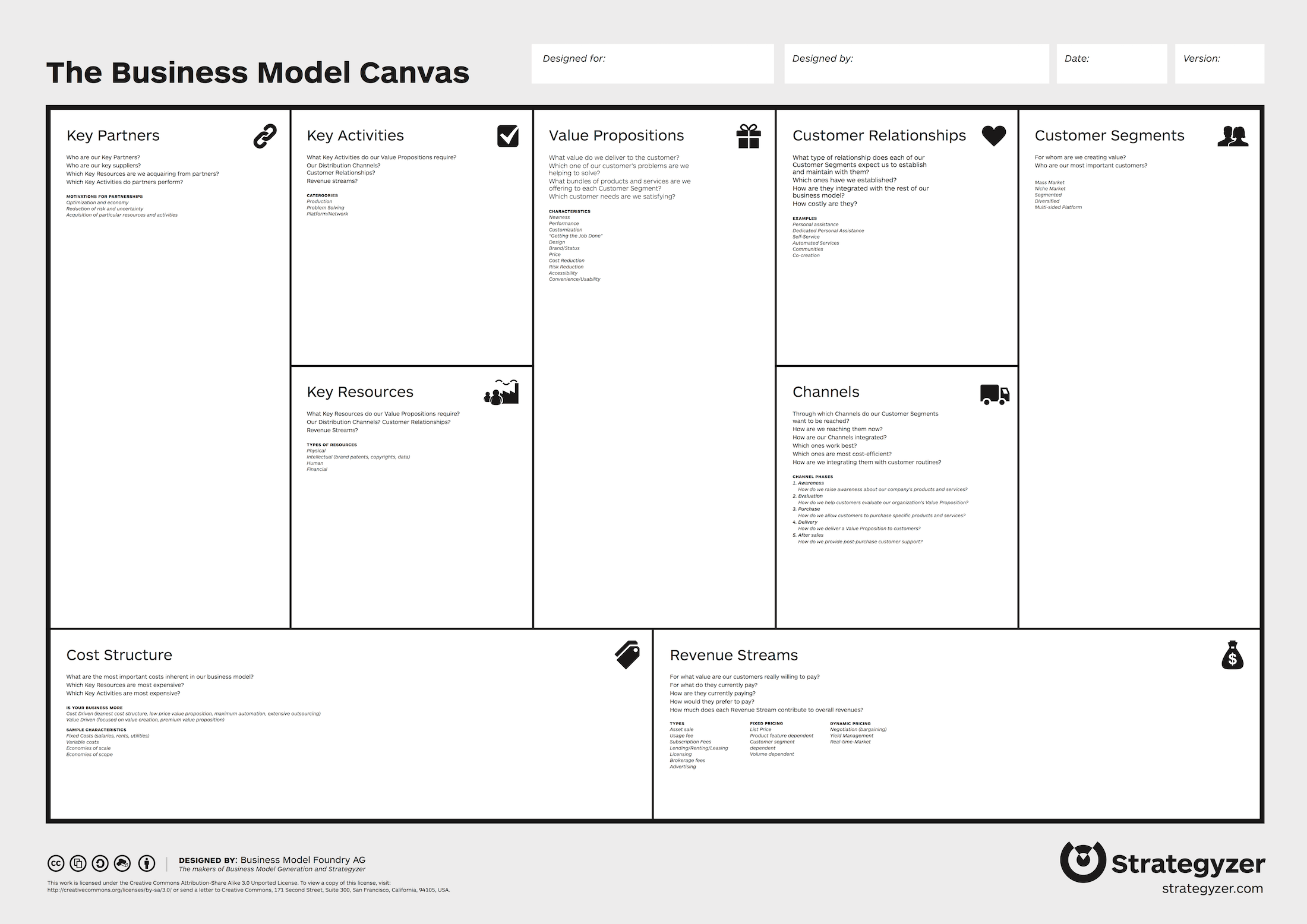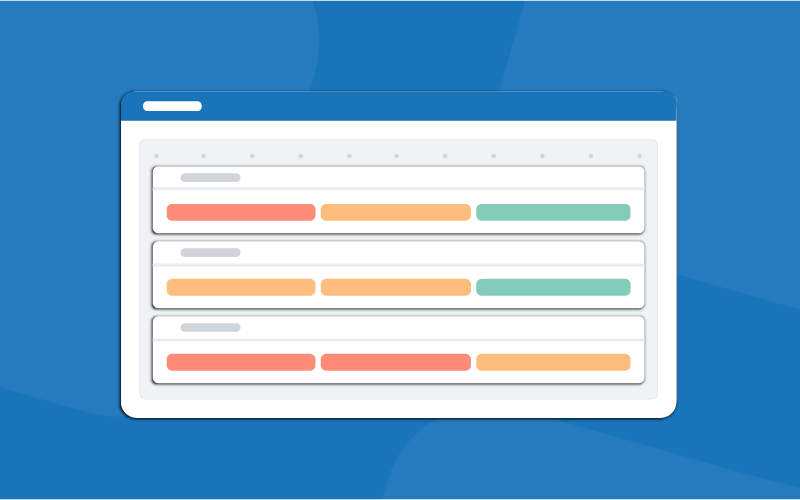Could you list all of the key building blocks you need to develop, manage, maintain, market, and sell a product on a single sheet of paper? With the business model canvas, you can! Using the business model canvas approach is a great way to force yourself to focus on the most strategically important elements of your product. As the name suggests, the typical use case for this tool is to outline the fundamental building blocks of a business, but it also can work really well for a product.
Today we’ll show you how the business model canvas works and how you can use it to come up with a high-level product strategy.
What is a Business Model Canvas?
As you can see from the sample example below (thanks, Strategyzer.com), a business model canvas is a one-page summary describing the high-level strategic details needed to get a business (or product) successfully to market.
The categories or buckets contained in a canvas can be customized. But most will look similar to the one here—covering such key areas as:
-
- The product’s value propositions (what it does and promises)
- Customer segments (who it’s for)
- Key activities (the steps the team must complete to make it successful)
- Key resources (what personnel, tools, and budget the team will have access to)
- Channels (how the organization will market and sell it)
- Customer relationships (how the team will support and work with its customer base)
- Key partners (how third parties will fit into the plan)
- Cost structure (what it costs to build the product as well as how to sell and support it)
- Revenue streams (how the product will make money)
If you think about it, that’s a fairly comprehensive set of building blocks you’ll need to think through for your product before you begin developing it. There will certainly be additional factors that’ll affect your strategy, but if you can fill in these high-level details—which, as you can see, should fit comfortably on a single page—you’ll have a useful strategic guide for developing your product roadmap.
Why Should I Use a Business Model Canvas to Develop a Product Roadmap?
Okay, but why? What’s the benefit of building a business model canvas (or the, even more, stripped-down variation, the lean canvas) to guide my product roadmap?
There are plenty of reasons. But simply put, you can think of a business model canvas as a mission statement for your product roadmap. It’s a handy reference you can refer to, to make sure your roadmap always reflects all the strategic elements needed for your product’s success.
Tweet This:
“Think of a business model canvas as a mission statement for your product roadmap.”
Our co-founder Jim Semick has a couple of great short videos explaining the business model canvas concept, which you can check out in the player below.




